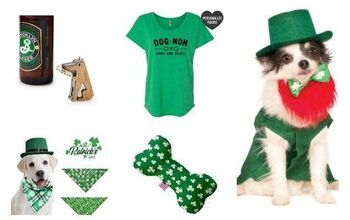Irish Setter


About Irish Setter
Nothing quite rivals the familiar coat and distinctive bronze color of an Irish Setter, which is partially why this famous breed of dog has been so recognizable throughout the years. From presidents to everyday people, everyone seems to have had an Irish Setter as a pet, and it’s no wonder why: these noble, friendly dogs can make not only versatile athletes, but comfortable companions on a daily basis.
In Gaelic, these Irish Setters can often be known as red setters thanks to their aforementioned bronze color. Where does the word “Setter” come from? A setter is a type of dog that searches for game by smelling for it, helping in the hunt (opposed to other hunting breeds such as pointers and retrievers).
Does an Irish Setter make sense as a pet for you and your family? You’ll have to read on to find out, but it’s our guess that you’ll find a lot about the Irish Setter to really enjoy no matter what kind of breeds you normally gravitate toward.
The Irish Setter searches for game by smelling for it, helping in the hunt.
Although there are some early mentions of Setter-like dogs earlier on, it’s probably the case that the Setter breed began in 17th to 18th century Europe. From this point, as interest in dogs widened as well as its availability, individual breeds began to branch out into different subsets which would later become its own breeds. By the 19th century, the Setters in Ireland had begun to take on their own unique look that we now recognize today as the Irish Setter.
Obviously, these Irish Setters were bred for hunting and by around 1886, the formal standards for the breed of Irish Setters were established. Other colors of Irish Setter were said to have existed around this time, suggesting that the Irish needed a brightly colored or at least solidly colored dog in their hunting activities.
Pedigree
Descending from the Setter group, the Irish Setter has a solid pedigree while having strongly carved out its own identity.
In the 1800s, Irish Setters were brought to the United States where they would go on to establish a strong pedigree as well. Irish Setters have been pets to presidents like Harry Truman and Richard Nixon, and have steadily gained a reputation as a quality show dog with athletic features and keen instincts.
Irish Setters can be active and require a fairly healthy and steady diet of meats and other foods rich in nutrients like vegetables. As with many dogs, it’s best to simply avoid feeding your Irish Setter processed foods altogether.
Irish Setters have a strong and healthy disposition
Highly responsive to training, Irish Setters work well in a group environment as one of the keen instruments in a hunting party. As a Setter, and Irish Setter has instincts to sniff out prey and discover it for the hunters in your group.
Irish Setters have a strong and healthy disposition – they are friendly toward adults and children alike and this makes them excellent and very trainable dogs.
An Irish Setter should weigh around 65-75 pounds in a male and 55-65 pounds in a female. Irish Setters will have plenty of muscle while still looking lean. It’s easy to tell when an Irish Setter has put on too much weight and efforts should be taken to ensure that the Setter doesn’t become habitually overweight.
Irish Setters are seen as having a friendly disposition that makes them ideal for families. Irish Setters are large but will get along with children and while they can intimidate a few of your house guests, they rarely act overly territorial or aggressive. An Irish Setter that has been raised in a balanced environment should have plenty of energy and confidence without it ever spilling over into aggression or anxiety.
Irish Setters could be classified as animated and outgoing, which makes them perfect playmates for children who enjoy the outdoors. As long as you keep your Irish Setter exercising, you’ll be able to enjoy a stable personality that is well-suited for families.
Another reason Irish Setters tend to make excellent pets is that they tend to be a healthier breed, which means less veterinarian bills over the years. Irish Setters are susceptible to a number of typical dog problems like hip dysplasia and progressive retinal atrophy, which causes blindness. But if you treat your Irish Setter right and give it a balanced diet with plenty of exercise, an Irish Setter can enjoy a high quality of life for a relatively long period of time.
At a life expectancy of some 11-15 years, Irish Setters can get quite old for dogs, especially dogs of its size.
Irish Setters can have a high tolerance for exercise so it’s important that they get outdoors and revel in their instincts on a habitual basis. With plenty of lean weight, Irish Setters will be agile and capable of plenty of running, so don’t go easy on them all the time. Get an Irish Setter feeling like a part of a team and it will feel like it’s in its natural environment.
Irish Setters are seen as having a friendly disposition that makes them ideal for families.
Says the American Kennel Club: “One of the most distinctive Sporting breeds, the mahogany red Irish Setter is an active, aristocratic bird dog.”
The Irish Setter’s deep reddish distinctive coat can be characterized as long and silky, and you’ll want to make sure it’s properly groomed in order to ensure your animal is comfortable and healthy.
Raising an Irish Setter properly from a puppy should require a good amount of knowledge about the breed. For example, it’s important that you teach your Irish Setter not to jump up on laps – they certainly grow too large to be a lap dog. Establishing strong boundaries and expectations early on with Irish Setters is important – they will reward you with a god personality and a strong sense of loyalty.
Photo credit: rodimovpavel/Bigstock

Amy Tokic, Editor of PetGuide.com, is a passionate animal lover and proud pet parent of Oscar, a Shih Tzu/Chihuahua cross, and Zed, a Japanese Chin. Her love of animals began in kindergarten, when she brought her stuffed dog Snoopy into class with her every day. Now, she writes about her adventures in pet ownership and tirelessly researches products, news and health related issues she can share with other animal enthusiasts. In her free time, Amy loves perusing used book and record stores, obsessing over the latest pet products available and chasing squirrels with wild abandon (a habit attributed to spending too much time with her pooches).
More by Amy Tokic

























